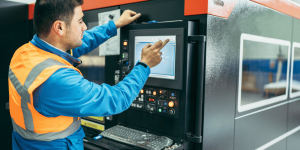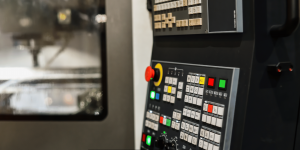CNC stands for Computer Numerical Control; these are milling machines automated through code instructions. The instructions are used to control the motions of the machine to cut and mold the materials effectively. Siemens is one of the leading suppliers of CNC controllers, and their simplicity and ease of use allow for quite an easy control of these high-tech devices.
User-Centric Design
Siemens CNC controllers contain an operator interface that has been highly developed with the user in mind. It can be seen that instead of using coded messages requiring interpretation to be understood, the displays use efficiently understandable messages that any operator can read on the screens. Both icons and menu structures of devices also follow general iconology that any personnel who has dealt with other technologies will identify immediately.
Touchscreen Controls
Some of the Siemens CNC controllers are equipped with large touch screens. The capacitive screens enable swipe and zoom gestures that will be familiar to anyone who has used any other phones or tablets. This makes it easier to adjust the various menus and parameters than when using the mouse or the hard keys.

Streamlined Workflows
Siemens CNC controllers offer various solutions that can address the needs of different industry settings in terms of flow. The connectivity of smart devices can be enjoyed by shop personnel monitoring, managing, and messaging the machines. The controllers also make it easy to perform multiple work offsets to automate the batch jobs that are repetitive. Regarding access levels, managers and shop floor workers can only control specific sections of the machine required to perform their tasks.
Simplified Programming
While hand programming of complex CNC code is possible, this can be time-consuming and very demanding. The barrier of learning is helped by Siemens controllers by including conversational programming. Operators do not need to memorize G-code libraries. Still, they can set up jobs using plain language coupled with fill-in-the-blank prompts. CAD file imports also help automate most of the programming to get jobs going much faster.
Intuitive Simulation Features
Highly efficient machining with the help of CNC requires precise and accurate movements of the machines by the programs fed into the system. Siemens controllers have features that allow for a dry run of the sequence in the interface. It is possible for operators to get a preview of the job and look for mistakes and entanglements before ever having to use a spindle. This assists in proofing programs thoroughly, eliminating the risk of damaging expensive equipment and workpieces.
Built-In Training Tools
For personnel still getting acquainted with aspects of operating the CNC, the programming guides and tutorials in the Siemens CNC controllers are an education in efficiency. Help menus contain brief and descriptive messages, which may be generic or specific depending on the situation, to help the user understand a feature or to guide him or her on what to do next. Moreover, many controllers also offer graphical overlays to the job simulation to explain in detail where and how the tool will go.
Simplified Maintenance
Siemens CNC controllers have tracking and notification features to ensure machines are well maintained. Usage meters enable tracking of components such as spindles and tools for desired maintenance notification. The cues are shown on the interface to indicate intervals of routine maintenance, either in terms of running hours or date. Error messaging provides information on how to solve some mechanical or electrical issues.
Network Connectivity
The networking capabilities of Siemens CNC controllers offer enhanced machine condition monitoring. With Ethernet and wireless connections, remote access is possible through desktop or mobile devices, if required. Live machine data feeds, speeds, cycle times, and utilization reports are other examples of information that personnel can obtain from any location. It also enables push notifications so that the maintenance teams can be notified of any problems likely to cause downtime.

User Profiles and Permissions
Siemens CNC controllers provide the ability to create distinct access permission levels for specific users. Management can restrict access to only those controls required by shop floor operators while performing their tasks. It can also store individual screen settings, such as default layouts or critical commands. Multi-language options guarantee the localization of the application for international teams and avoid confusion when sharing stations.
Evolving Platform
Siemens is proactive in the development of new releases of its CNC software offerings to match the market trends. They provide subscription content downloads in order to get the latest postprocessors, machine profiles, and cutting tools data. The controller’s open architecture also provides some level of customizability and compatibility with popular manufacturing software packages. Mobile apps allow personnel to have more opportunities to track and control the equipment.
Summary
Siemens CNC controllers feature an operating panel, simulations, and training tools, as well as functionality that allows connection to smart devices. Features such as their touchscreen control, conversational programming, and flow enable easy transition even by those shops that are yet to adopt robotic automation. This shows that Siemens aims to demystify even the most intricate operations to ensure that anyone – from line managers to shop floor operators – can comfortably engage with CNC equipment.
The content of the work ensures that the main topic is discussed comprehensively through different subtopics and subheadings. It does not have any line repeated from one verse to the other. If you want any changes or if you have any other requests regarding the content, kindly inform me.
